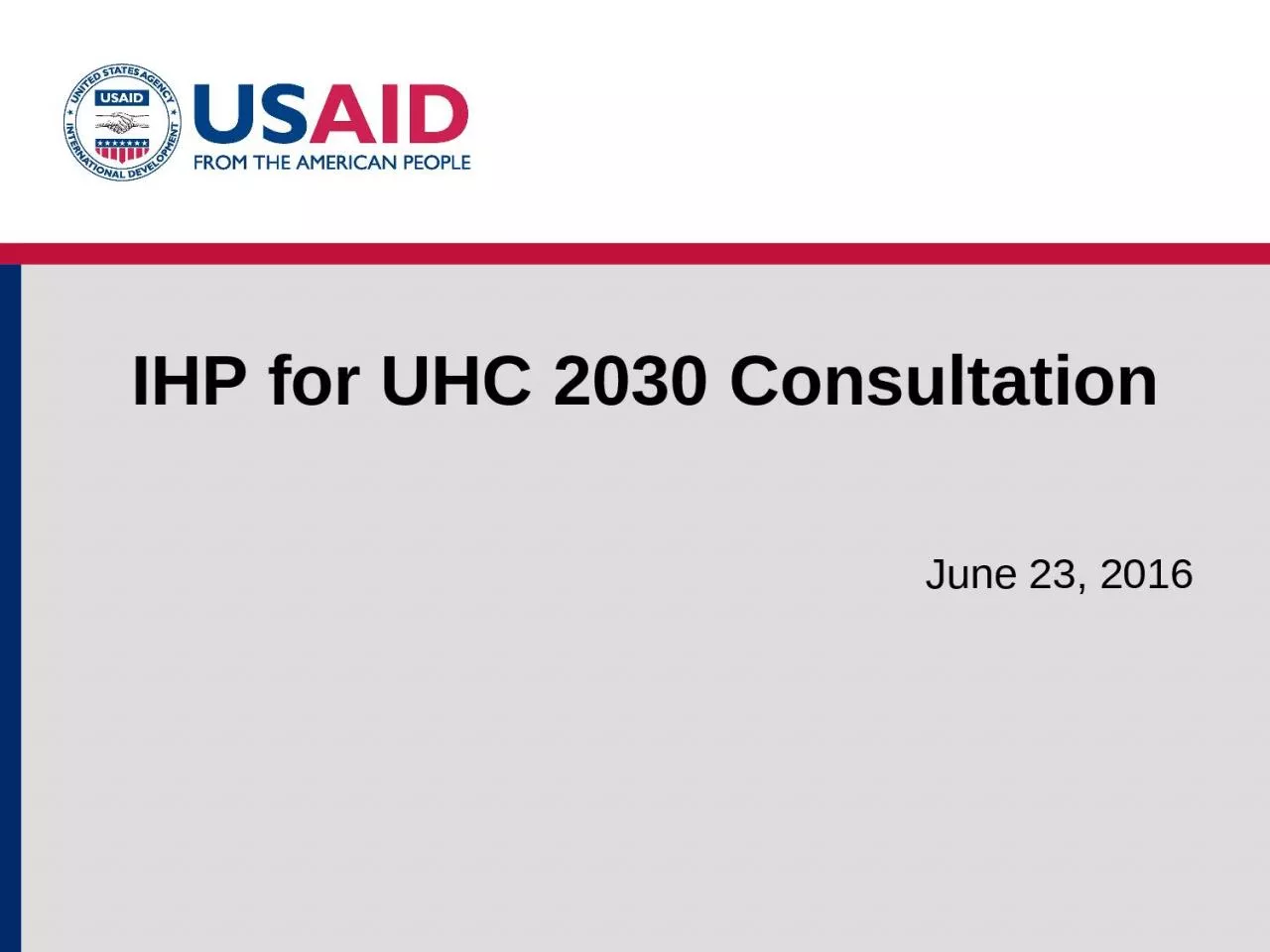

June 23 2016 Source J Bradford DeLong Estimates of World GDP One Million BC Present 1998 World per capita GDP 1990 dollars Unprecedented Economic Growth Maddison DeLong Half the LICs in 2000 ID: 1045820
Download Presentation The PPT/PDF document "IHP for UHC 2030 Consultation" is the property of its rightful owner. Permission is granted to download and print the materials on this web site for personal, non-commercial use only, and to display it on your personal computer provided you do not modify the materials and that you retain all copyright notices contained in the materials. By downloading content from our website, you accept the terms of this agreement.
1. IHP for UHC 2030 ConsultationJune 23, 2016
2. Source: J. Bradford DeLong, Estimates of World GDP, One Million B.C. – Present, 1998World per capita GDP 1990 dollarsUnprecedented Economic GrowthMaddisonDeLong
3. Half the LICs in 2000 moved upSource: WHO, 20123
4. “The First Law of Health Economics”Log Total Health Expenditures/CapitaSource: Jacques van der Gaag; WHO/IMF 2004N = 178R2 = 94%
5. 5Source: WHO 2011 data based on World Bank Country Income GroupingsEconomic growth can bring some challenges: e.g. the OOP ditch
6. USAID vision for health financing6DONOR DEPENDENCEDOMESTIC POOLED EXPENDITURESOUT-OF-POCKET EXPENDITURES (OOP)Source: IHME (2013): “Financing For Global Health 2013;”WHO (2011): “The Abuja Declaration;” WHO (2014): “Global Health Expenditure Database; WHO (2006): “Exploring the thresholds of health expenditure for protection against financial risk;” Dalberg analysis.Traditional: Development assistance for health surpassed $31 billion in 2013; much of this assistance is in the form of grants, upon which many LMICs are dependentTransitional: Through taxation and transparency programs, budget allocation efforts, and private sector mobilization, domestic public and private sectors increasingly replace donor fundingTransitional: Transitional support plans should ensure that out-of-pocket spending decreases to less than 20% of total health expenditure (e.g., through universal health coverage)Transitional: Donors gradually sunset grants, increase the use of financing instruments to facilitate country-led transition to more sustainable health budgets, and reserve grant-based aid for global public goods and the last mileTraditional: Many LMICs spend less than 15 to 30% of their government budget on health (Abuja Declaration target); many opportunities for private sector mobilization go unrealizedTraditional: Out-of-pocket spending makes up over 40% of average total health expenditure in low-income countries, putting the poorest at risk of health-related financial catastrophesReduce out-of-pocket spendDecreasedonor dependenceIncrease domestic resource mobilizationTRANSITIONALTRADITIONAL(TODAY)SUSTAINABLE(2035 AND BEYOND)6
7. 7
8. 8Universal Health Coverage: The Ultimate Frontier for Global HealthSource: ILO 2014; OECD.